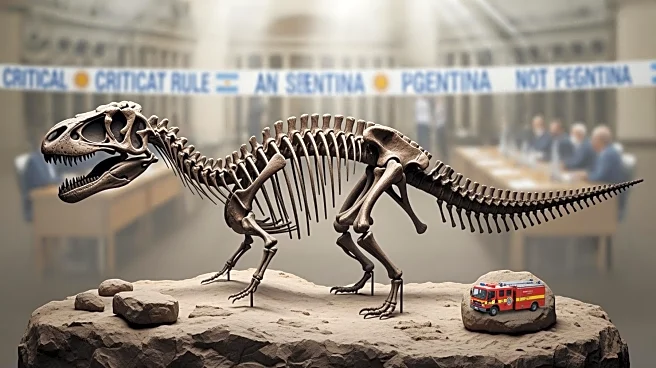What's Happening?
Paleontologists in Patagonia, Argentina, have unearthed the remains of a colossal dinosaur named Chucarosaurus diripienda. This newly identified titanosaur measures approximately 30 meters long and weighs
tens of tonnes, making it one of the largest land animals ever discovered. The discovery is reshaping scientists' understanding of how these long-necked giants evolved, moved, and survived in prehistoric ecosystems. The bones were so massive that they cracked the road during transport to Buenos Aires for further study. The genus name 'Chucaro' comes from the Quechua word for 'wild' or 'indomitable,' while 'diripienda' is Latin for 'scrambled' or 'scattered,' symbolizing the power of the animal and the turbulent journey its fossils endured.
Why It's Important?
The discovery of Chucarosaurus diripienda adds a significant chapter to the evolutionary story of titanosaurs, a group of long-necked, plant-eating dinosaurs that dominated South America during the Cretaceous era. By comparing Chucarosaurus's bone structure with that of other species, researchers can trace how these giants adapted to different environments, developing unique limb proportions, joint structures, and movement patterns. The insights gained from this discovery could help explain how sauropods became some of the most successful animals in Earth's history, thriving across continents for over 100 million years.













